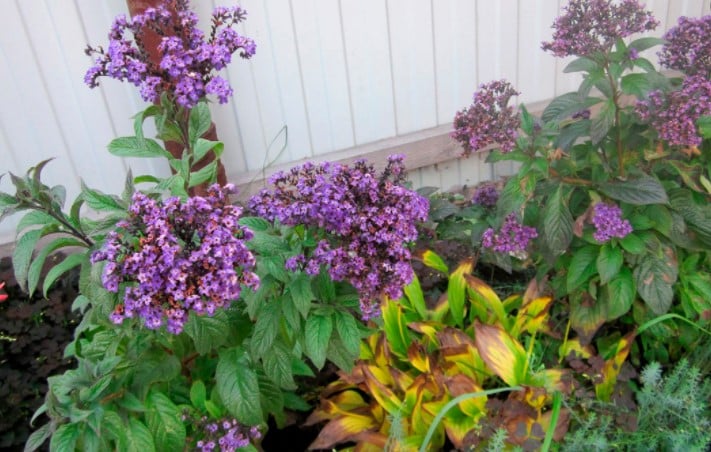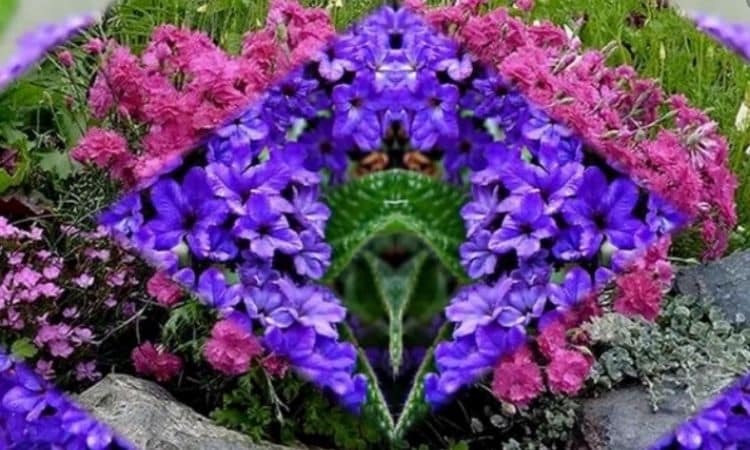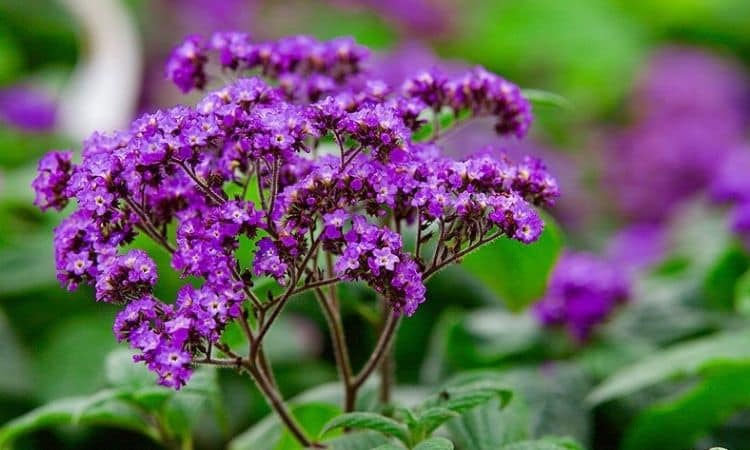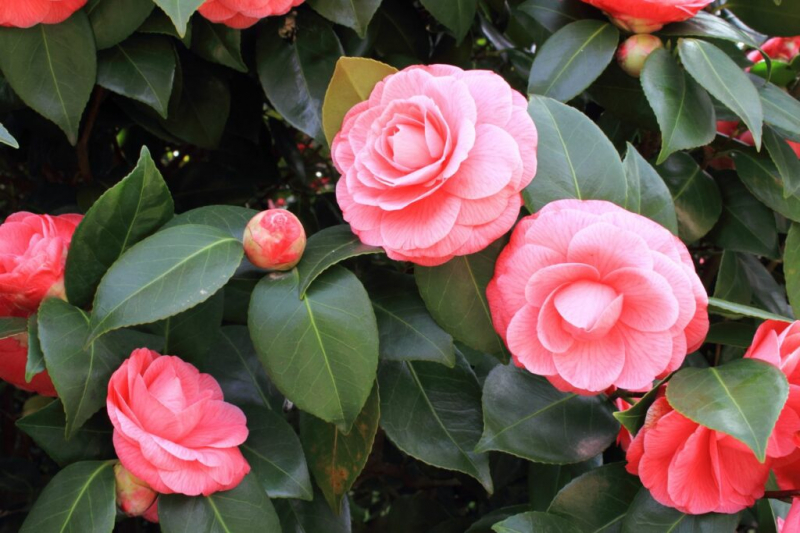Heliotropium Arborescens (Common Heliotrope): How To Plant Care For The Solstices
The Heliotropium Arborescens is a wonderfully fragrant eye-catcher for every garden or balcony. We introduce you to the most beautiful heliotrope species and show you how to plant and care for South American beauty in the right way.
Profile
Table of Contents
- Botanical name: Heliotropium arborescens.
- Trivial names: heliotrope, solstice.
- Plant families: Borage and robbery-leaf plants (Boranigaceae).
- Plant species: evergreen half shrub.
- Smells strongly Heliotropium in the blossom.
- Origin: Peru.
- Growth habit: low, bushy, brittle shoots.
- Mostly cultivated as an annual.
- Height: 30 to 60 cm.
- Flowering time: May to September.
- Leaves: rough-hairy, oval, golden yellow to olive green, always turn towards the sun (designation heliotrope).
- Flower color: white or purple to dark blue.
- Flower shape: many small flowers in heavy, bushy stands.
- Not edible.
- Brittle, thin shoots may need to be supported.
- Not hardy does not tolerate frost.
- Soil type: rich in humus, permeable, fresh, not too high in nutrients.
- Lime tolerance: good.
- pH value: slightly acidic to calcareous.
- Humus: yes, but in moderation.
- Position: sunny with some shade.
- Soil moisture: moist without being wet.
- Garden style: beds and borders with low vegetation, balcony boxes, and bowls.
- Toxic: yes.

Heliotropium Arborescens: Flowering Time, Origin, And Characteristics
The Heliotropium arborescens belongs to the family of borage plants or predatory plants and has its origin in the Peruvian Andes. The flowering period of the Heliotropium Arborescens is wonderfully long with up to five months, it lasts from May to September. The sun-loving Common Heliotrope shows an upright, dense growth and reaches heights of 30 to 80 centimeters depending on the variety.
Many small, five-petalled, mostly dark purple individual flowers form lush corymb clusters above elliptical, alternately arranged, mostly dark green leaves. The leaves are wrinkled and slightly hairy. The Heliotropium Arborescens is also known as solstice because its leaves – like those of many species of the genus Heliotropium – always face the sun and rotate with the position of the sun. Another special feature of the Heliotropium Arborescens is, as the name already suggests, its intense scent of Heliotropium.

The Most Beautiful Solstice Varieties
There are several varieties of Heliotropium Arborescens, which differ in flower color, leaf color, growth height, or even in the smell of the flowers.
Here is a selection of the most beautiful solstice varieties:
- Alba: White flowers with a very intense Heliotropium scent.
- Marine: Dark violet to deep blue flowers; compact growth: 30 – 40 cm.
- Schloss Ahrensburg: medium blue flowers; blooms very early; smallest variety: 30 cm.
- Iowa: Light purple flowers; the scent of gummy bears.
- Aurea: Light purple flowers; green-yellow foliage.
Heliotrope planting
Heliotrope can be planted in pots on the terrace or balcony as well as in beds – the main thing is that the location offers plenty of suns!

The perfect location for solstices
Solstices love the sun and should therefore be planted in a sunny place. Even half-shaded locations are suitable, but the optimal development of the plant is achieved in direct sunlight. The perfect location is also well protected from wind and rain.

What do you need to consider when planting solstices in the bed?
If you have found a sun-exposed place in your bed, it is also important that the soil around the Heliotropium Arborescens is humusy, fresh, and permeable to water. Before planting, pull the root ball of the Heliotropium slightly apart to stimulate root development. Also, make sure not to plant the Heliotropium Arborescens too deeply. Immediately after planting, the flower will be happy to receive plenty of water.

Heliotropium Arborescens for the balcony: tips for planting in a pot
Heliotropium Arborescens also thrive very well in pots on the balcony or terrace. When planting, choose a sufficiently large planter so that the roots can develop well. In order to avoid waterlogging, it is essential that there is a drain hole in the bottom of the container. Clay fragments can be placed on top of it to keep it free. It offers the solstices the perfect conditions for vigorous growth and lush flowering. The expanded clay it contains ensures balanced moisture and thus healthy root growth.

Heliotropium care
Apart from its location claim, which can easily be recognized by its name, the solstice is relatively robust and easy to care for. Nevertheless, care must be taken to ensure the correct supply of water and nutrients.

Watering solstices
The solstices should be watered daily. However, since the Heliotropium Arborescens is sensitive to stagnant moisture, the drainage or seepage of excess water must be ensured. In order to cover the nutrient need of the solstices, a monthly liquid fertilizer administration is recommended in the months April to September.

Pests and diseases
The Heliotropium Arborescens is in principle an easy-care plant. If you follow the instructions, there are no typical diseases. Flowering laziness and growth disturbances are basically due to insufficient care or errors in watering. However, aphids and whiteflies like Heliotropium arborescens. Especially during hibernation, the infestation can spread well.
You might so like: Swiss Cheese Plant: How To Care And Propagation Monstera Adansonii
Typical signs for an infestation with whiteflies are
- Yellowed, spotted leaves.
- Drying of the leaves, falling off.
- On the tops of the leaves possibly honeydew.
- On contact, numerous insects fly up.
When hibernating the solstice in the greenhouse, the aforementioned pests can be prevented with ichneumon flies and spiders. Both are natural enemies of the pests, which simply eat them up. Of course, other plants in the greenhouse also benefit from this. Yellow boards have also proven to be helpful.
Aphids
Aphids, on the other hand, make themselves noticeable by strongly curled and ruffled leaves. The leaves sometimes seem to be downright blistery when the plant is infested with aphids. The aphids sit in dense groups on the underside of the leaves, while the sticky parts of the plant are infested by fungi and therefore often look black.
Aphids should be controlled in a natural way, for example with soap solutions or stinging nettle extract. Experience shows that both whiteflies and aphids are reduced drastically when the Heliotropium Arborescens moves outside in spring.






